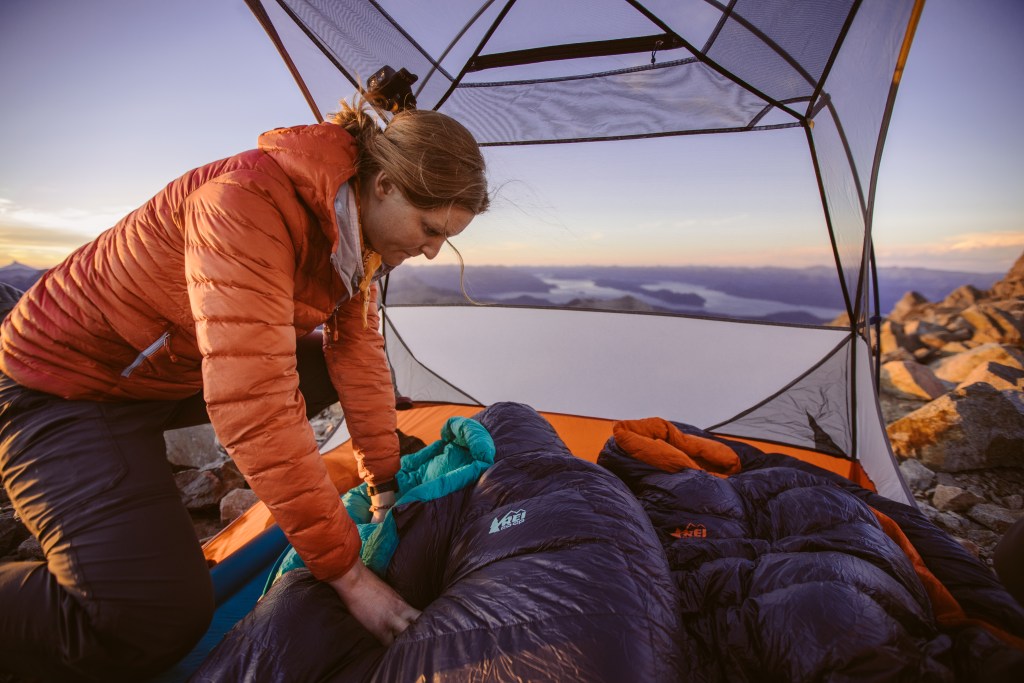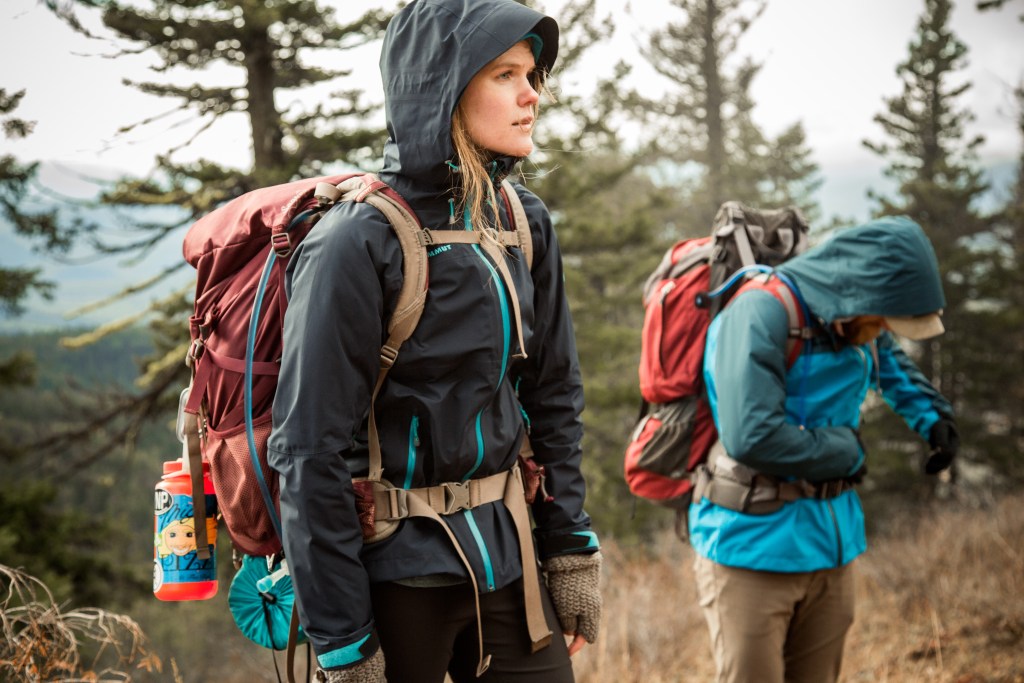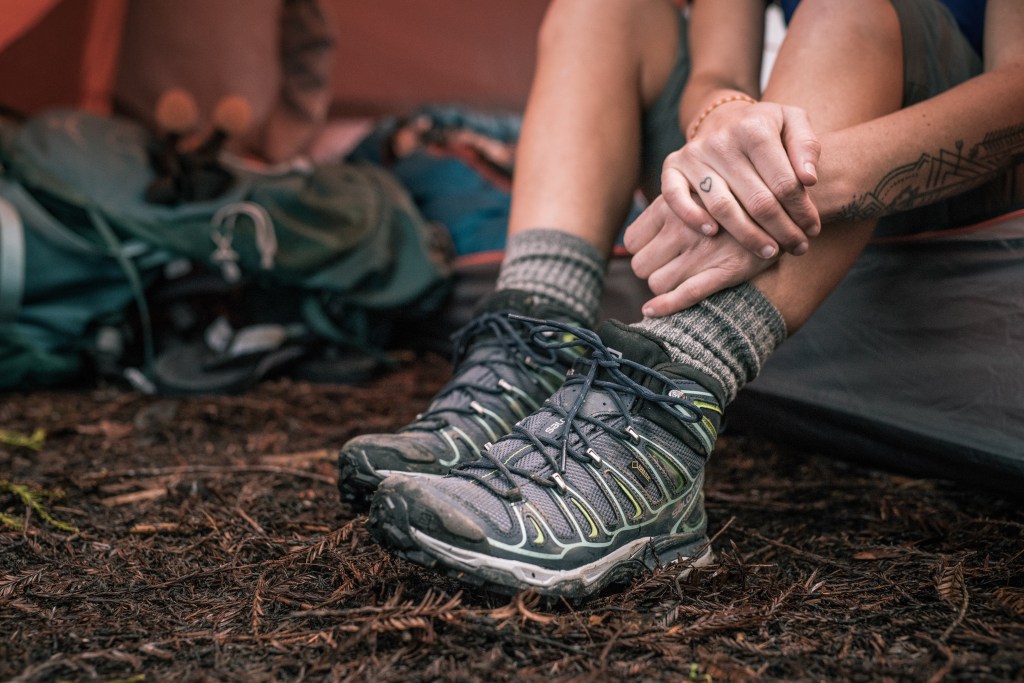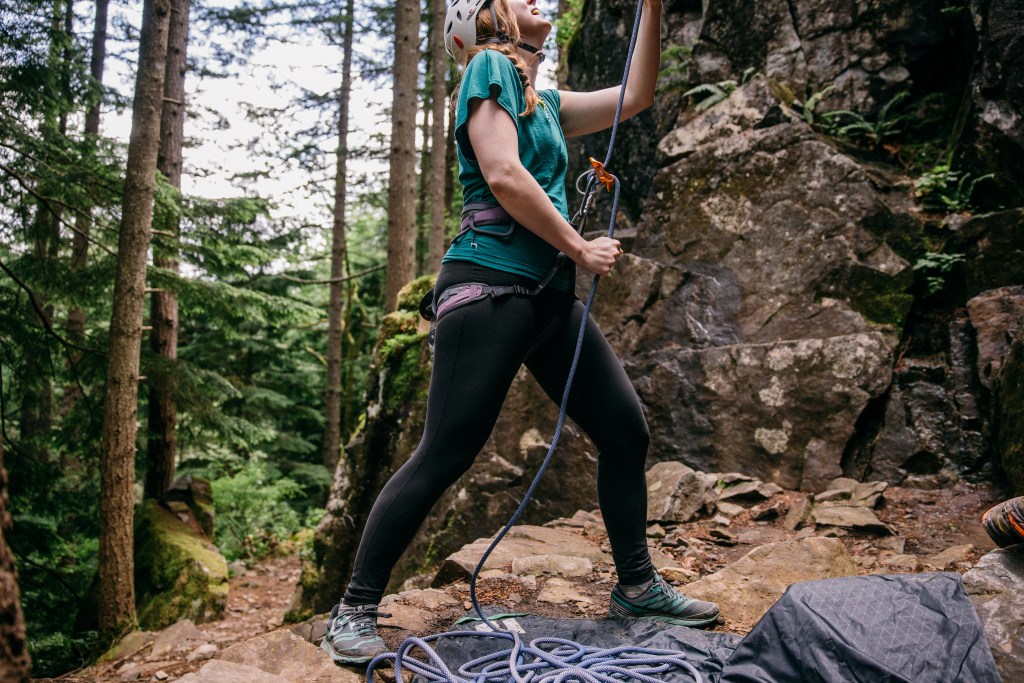This month’s question: Jane Watson, an REI Co-op member since 1989 and manager/editor of REI’s Expert Advice program, has helped put together dozens of REI buying guides and often gets asked, “When does choosing women-specific gear really make a difference?”
Decades ago there were no backpacks or sleeping bags or hiking boots made for women. We made do with what the guys used. Companies began to wise up when women demanded gear that truly worked for them. Designers finally caught on that women are shaped differently from men, and have different body thermodynamics, too (colder, in general). While some gear for women derived from a “shrink it and pink it” attitude, other brands got serious.
Today you can find much of what you need for the outdoors in a women’s version. But when does women-specific gear really make a difference to your outdoor experience? We spoke with some REI Co-op experts in key product categories to give us some insights.

Bikes
Melissa Beams, bike department sales lead at the REI Seattle Flagship store, believes women’s gear “can make a big difference in a variety of ways—but it always comes down to fit. Whether it’s clothing or the bike itself, it’s the fit that counts.”
Some bike companies still shrink a men’s frame, add colors or graphics they think a woman would prefer and “dumb down” the components. However, Beams says she’s seeing a lot more frame geometry designed to fit women’s proportions, with neutral tones, and with components that are equivalent to those on the men’s version.
Beams cautions, however, that while certain bikes or packs or other gear may be designed to fit the proportions of most women, men’s gear may still be a better fit for some women (and women’s gear may also be a good fit for certain men).
“A woman who wants a bike with great performance won’t limit herself to women’s bikes,” Beams continues. “She’ll find the one with the best fit for what her goal is, whether it’s road racing, long-distance touring or mountain biking.”
“It’s nice to have a bike that makes you feel like a strong, confident rider without the Pepto-Bismol pink,” Beams adds.

Sleeping Bags
“What women-specific gear should women definitely have? A sleeping bag,” says Liz Meschio, sales lead in the camping department at the REI Dallas store and leader of classes for women who want to try backpacking.
Meschio is absolutely clear on this one. “You can’t beat being warm when you’re outside. I teach women’s backpacking and that’s the one thing I really stress. I’m 6 feet tall and fit better in a men’s pack. But I heavily advise women to get a women’s sleeping bag. … It’s a bit heavier than the men’s version, but that’s because it fits better and has more insulation where we need it most.”
Sleeping Pads
While women’s pads have more cushioning and insulation under the hips and feet—cold spots for women—the extra comfort is a personal decision that each woman needs to make for herself. For Meschio, it’s not super crucial. Her backpacking criteria in order are: weight, utility, then comfort. “It took me four backpacking trips to figure that out,” she says.

Backpacking Packs
Whether you need a pack for climbing, skiing, hiking, hydration or trail-running, you can find a women’s-specific pack. Packs for women generally have a shorter torso, curved shoulder straps to fit around your breasts, a smaller hipbelt and extra padding.
Meschio—remember, she’s 6 feet tall—explains her pack choice. “I normally use a men’s pack with a women’s hipbelt. I switched it out. Hips are where the rubber meets the road. Most rubbing and chafing on women occurs on the side of your boobs and on hips. Men often tell women to put the belt above the hipbones, but the belt should cradle the bones.”

Hiking Boots
“The biggest thing is knowing your own foot.” Meschio should know. “My feet are too big for most women’s shoes. I wear a men’s 10.” As for wearing men’s footwear, she points out, “Men’s boots have really thick ankles. If you can wear women’s, they’ll be a lot more comfy.” Women’s shoes are narrower, especially in the heels.
“Having that tight cup around your heel is super important for ankle support when you’re wearing trail runners instead of boots,” Meschio explains.
Clothing
Meschio wears women’s running shorts on the trail. She finds women’s pants too tight, and thinks they’re designed more for fashion, not for true utility. She knows a woman who switched to men’s pants for comfort. Plus, she adds, “The crime of women’s pants is the lack of pockets.” She stresses to the women in her groups: “Wear what’s comfortable for you. Make sure there’s no cotton and that the seams won’t cause chafing.”

Climbing Harnesses
Meschio weighs in on climbing gear, having just roped up on a few routes at Joshua Tree. “I fit better into a men’s harness, but again, I’m not the average female.” Women’s harnesses tend to have a smaller waist, higher rise and larger thigh loops. “The fit is critical,” Meschio explains. “Whether you wear a men’s or a woman’s harness, you want to feel secure and balanced.”
Skis and Snowboards
When REI merchandise buyer Kelly Maggs started snowboarding more than 20 years ago, she used her husband’s board. At the end of the day she’d be physically exhausted. “Once I got on a women’s board,” she recalls, “I wasn’t fighting with it anymore. I had so much more confidence.”
Maggs, who’s been the co-op’s buyer for women’s and men’s snowboards for seven years, says, “I definitely think a women’s board makes a big difference for women snowboarders because the flex is not as stiff.”
Maggs feels that for a woman to have the best snowsports experience she should start on skis or a snowboard designed for a woman’s geometry. “I could’ve gotten better quicker on a woman’s board,” Maggs says. “You’re getting that positive reinforcement and you’re apt to push yourself harder.”
The main advantage of women’s-specific snowsports gear? “You ride the board instead of the board or skis riding you.”
Making Your Choices
When considering whether to buy women’s specific gear, it ultimately comes down to finding the gear that works best for you—not for your best friend or workout buddy—but you. Know your body, and make sure the gear fits. If it’s designed for women, great. “But,” as Meschio says, “if the men’s fits you better, go to town.”
And, adds, Beams, “There will always be those women who want their hot pink bike,” and if that’s what speaks to you, go ahead and embrace it.
Meet the Experts

Elizabeth Meschio is an employee at the REI store in Dallas, where she teaches the REI Outdoor School classes Backpacking for Women and Hiking the PCT. She solo-hiked the Pacific Crest Trail in 2015.

Melissa Beams, bike department sales lead at the REI Seattle store, grew up riding hardtail MTB until she finally found a road bike that fit properly. She then got into endurance road cycling—among her feats, she’s logged 301 miles in a 24-hour challenge and crossed the country from California to Virginia.

Kelly Maggs is a merchandise manager at REI headquarters where she’s been an employee for 12 years. She started skiing at age 5 but switched her allegiance to snowboarding. Her main “hill,” Crystal Mountain Resort near Mt. Rainier in Washington state, is practically in her backyard.
